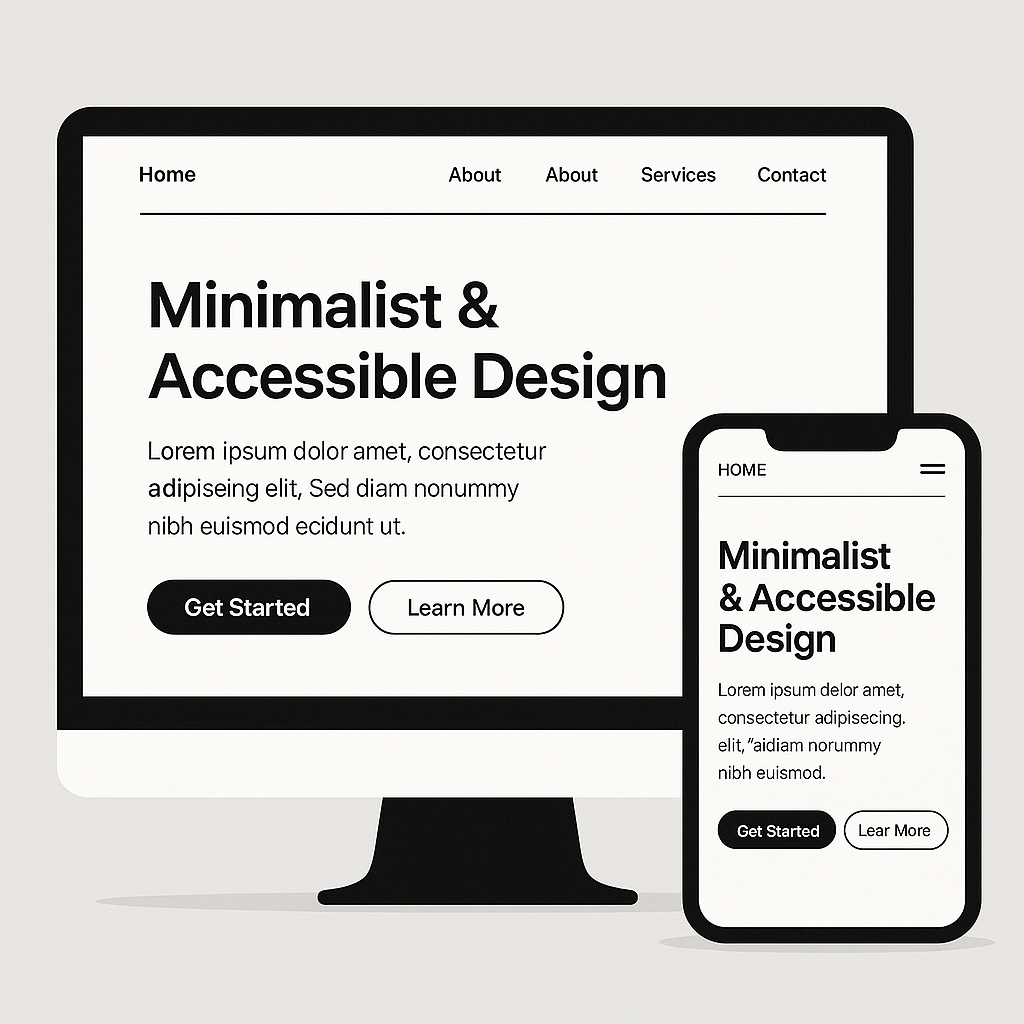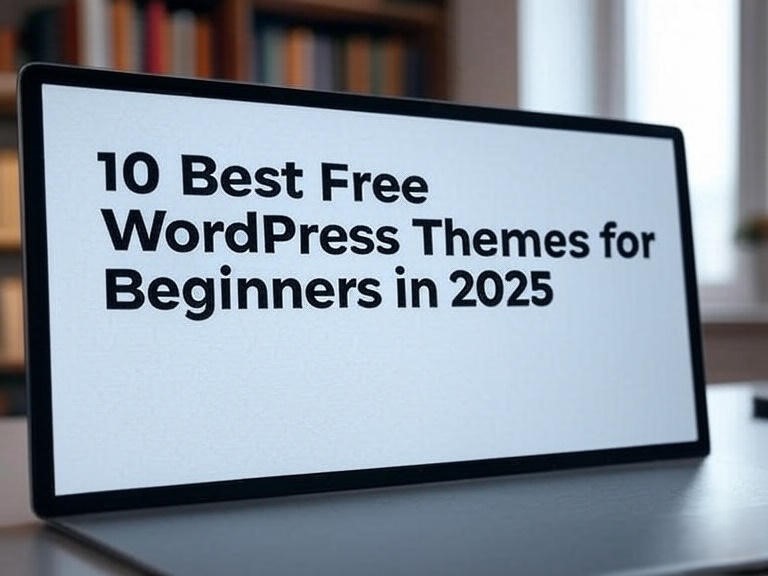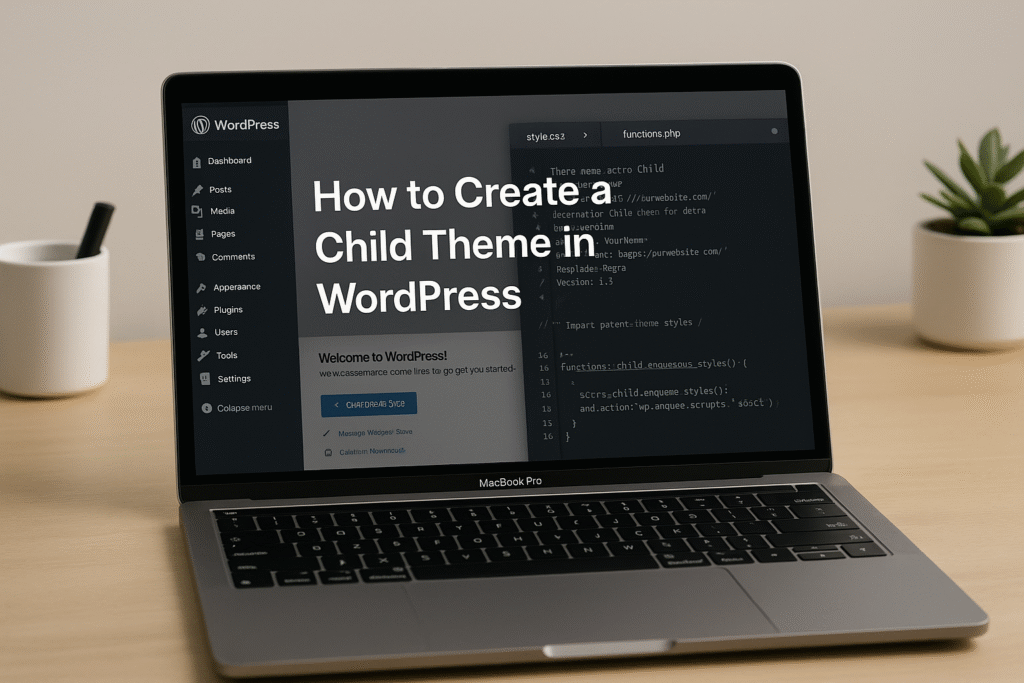
Table of Contents
Introduction
In today’s web landscape, simplicity and inclusivity are no longer trends—they’re essential. A clutter-free website not only offers a smooth user experience but also helps in better SEO and faster loading times. At the same time, ensuring your website is accessible allows people of all abilities to interact with your content. This brings us to the rising importance of minimalist WordPress themes paired with accessible WordPress design.
In this blog post, we’ll cover the top 10 minimalist and accessible WordPress themes for 2025, discuss the key design principles behind them, and offer layout tips and plugin recommendations to help you create clean, inclusive websites.
Why Choose a Minimalist & Accessible WordPress Theme?
Before we dive into the themes, let’s understand why this combination is powerful:
✅ Benefits of Minimalist Design
Faster Loading Times: Fewer design elements reduce page weight.
Better Focus: Clean layouts keep user attention on key content and calls to action.
Modern Aesthetic: A simple look often feels more elegant and professional.
SEO-Friendly: Less clutter helps search engines crawl and understand content better.
✅ Importance of Accessibility
Inclusivity: Websites become usable by people with disabilities, including visual, auditory, cognitive, and motor impairments.
Legal Compliance: ADA and WCAG 2.2 standards are now a requirement for many businesses.
Improved UX for All: Accessible websites often offer superior usability across all devices and demographics.
Now let’s explore the best themes in 2025 that perfectly balance these two design philosophies.
Top 10 Minimalist and Accessible WordPress Themes in 2025
- Neve by Themeisle
Best For: Blogs, small businesses, portfolios
Key Features:
Lightning-fast performance
WCAG 2.2 compliance
Fully compatible with Gutenberg and Elementor
Accessibility-ready navigation
Why It Stands Out:
Neve is a go-to theme for minimal design lovers. With clean headers, spacious content areas, and keyboard-friendly menus, it checks all boxes for accessibility.
- Astra (Minimalist Starter Templates)
Best For: Any website, from agency to WooCommerce
Key Features:
Lightweight (less than 50 KB on frontend)
Accessibility-ready
Customizable without code
Integrates with LearnDash and other LMS plugins
Why It Stands Out:
Astra’s flexibility makes it ideal for anyone aiming for simplicity without sacrificing features. Use its accessibility-focused starter templates for inclusive layouts.
- Blocksy
Best For: Tech blogs, creatives, and business sites
Key Features:
Built with Gutenberg in mind
WCAG-compliant color contrast
Minimal UI with customizable headers
Accessibility-friendly nav structure
Why It Stands Out:
Blocksy’s minimal header and focus on usability make it ideal for websites targeting wide-ranging audiences, including those using screen readers.
- GeneratePress
Best For: Performance-focused blogs and portfolios
Key Features:
Clean layout with emphasis on content
WCAG 2.1 AA support
No jQuery, just clean JavaScript
Customizable layout modules
Why It Stands Out:
GeneratePress is developer-friendly but also accessible and simple for content creators. Its small footprint and high readability score make it a top choice.
- Chaplin
Best For: Personal blogs and magazine-style websites
Key Features:
Designed specifically for Gutenberg
Accessible HTML and keyboard navigation
Large typography and clean layouts
GPL-licensed and open-source
Why It Stands Out:
Chaplin’s attention to typographic hierarchy and semantic HTML makes it a minimalist’s dream that also welcomes everyone.
- Hello Elementor (with accessibility-ready kits)
Best For: Designers using Elementor Pro
Key Features:
Barebones for ultimate customization
Fast-loading, clean codebase
Can be made fully accessible with widgets
Minimalist starter kits available
Why It Stands Out:
While not inherently accessible, Hello Elementor is powerful when combined with well-optimized kits and ARIA-compliant plugins.
- Anders Norén’s “Hansen” Theme
Best For: Bloggers, writers, and personal portfolios
Key Features:
Built by accessibility-conscious developer Anders Norén
Great use of whitespace and readability
Keyboard and screen reader friendly
Gutenberg-compatible
Why It Stands Out:
Hansen is minimal without being boring. It follows all modern design best practices while ensuring accessibility for all.
- Twenty Twenty-Four (Default WordPress Theme)
Best For: General websites, nonprofits, authors
Key Features:
Built with accessibility and simplicity in mind
WCAG compliance
Full Site Editing support
Broad customization options
Why It Stands Out:
Each year, WordPress releases a theme focused on inclusivity. Twenty Twenty-Four continues that legacy with elegant block design and universal usability.
- Kadence
Best For: WooCommerce stores, service businesses
Key Features:
Accessible color palette system
Minimal, distraction-free design
Pre-built templates that follow WCAG guidelines
Mobile-optimized and lightweight
Why It Stands Out:
Kadence makes it simple to build a minimalist eCommerce or service-based site without sacrificing on accessibility or performance.
- Oaknut (FSE Theme)
Best For: Creative professionals, agencies
Key Features:
Uses Full Site Editing (FSE)
Focuses on large text, spacing, and contrast
Accessibility-ready templates
Grid-based minimalist layout
Why It Stands Out:
Oaknut is part of a new wave of block-based themes that prioritize modern web standards and universal design, ideal for 2025.
Essential Plugins to Enhance Minimalist and Accessible Design
Even with the right theme, plugins can enhance accessibility and keep your design clean.
🔌 Recommended Plugins:
| Plugin Name | Purpose |
|---|---|
| WP Accessibility | Adds skip links, language attributes, and alt tag reminders |
| One Click Accessibility | Quick fixes for contrast, keyboard nav, etc. |
| Accessibility Checker | Page-by-page WCAG audit |
| Rank Math SEO | Helps optimize for voice search, readability, and structure |
| Smush | Compress images for faster load speeds (minimalism = speed!) |
Layout & Design Tips for a Minimalist & Accessible Site
Even the best theme won’t work if your content and design aren’t aligned with accessibility and simplicity. Here are best practices:
✅ Typography & Contrast
Use sans-serif fonts like Open Sans or Roboto for better readability.
Maintain a color contrast ratio of at least 4.5:1.
Use font sizes above 16px for body text.
✅ Navigation
Keep menus short and intuitive.
Enable keyboard navigation.
Use ARIA labels and roles for screen readers.
✅ Color & Spacing
Limit your palette to 2-3 primary colors.
Embrace whitespace to avoid visual clutter.
Use clear hover and focus states on all buttons and links.
✅ Images & Media
Always add alt text to images.
Use descriptive link text like “Download eBook” instead of “Click here.”
Ensure videos have captions or transcripts.
Voice Search & Screen Reader Compatibility
Modern accessibility includes voice and screen reader integration. Here’s how minimalist designs help:
Fewer distractions means screen readers can focus on the main content easily.
Clear structure (headings, lists, navs) makes voice commands more effective.
Combine Rank Math with semantic HTML for better voice SEO results.
Final Thoughts
Minimalism is not just about removing elements—it’s about elevating the user experience by focusing on what truly matters. When paired with accessibility, your website becomes more than a digital presence. It becomes a welcoming, usable space for everyone.
Whether you’re a blogger, small business owner, or developer, choosing one of these minimalist and accessible WordPress themes in 2025 ensures your site is future-proof, legally compliant, and universally loved.
FAQs
What makes a WordPress theme “accessible”?
Accessible themes follow WCAG guidelines, offer keyboard navigation, proper HTML semantics, screen reader support, and color contrast optimization.
Can I make an existing theme accessible?
Yes, using plugins like WP Accessibility and Accessibility Checker, and modifying content structure and ARIA labels.
Are minimalist themes suitable for eCommerce?
Absolutely. Themes like Kadence and Astra offer minimalist WooCommerce layouts that are fast, clean, and user-friendly.
Do minimalist themes affect SEO?
Minimalist themes usually improve SEO thanks to faster load times, better mobile performance, and cleaner HTML structure.
Conclusion
In 2025, building a website isn’t just about looking good—it’s about creating a seamless experience for everyone. By choosing a minimalist WordPress theme with built-in accessibility features, you not only enhance usability and performance but also ensure your site is inclusive and compliant with modern web standards.
Whether you’re a blogger, business owner, or developer, the themes we’ve listed offer the perfect balance of simplicity, speed, and accessibility. Pair them with the right plugins and follow best practices in layout and content structure, and you’ll have a future-proof site that serves all users effectively.
Minimalism and accessibility are no longer optional—they’re the standard. Embrace both to elevate your WordPress website to the next level.


